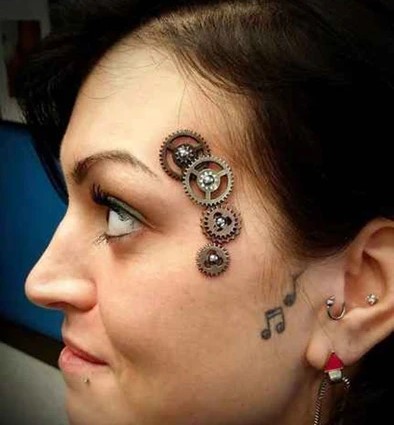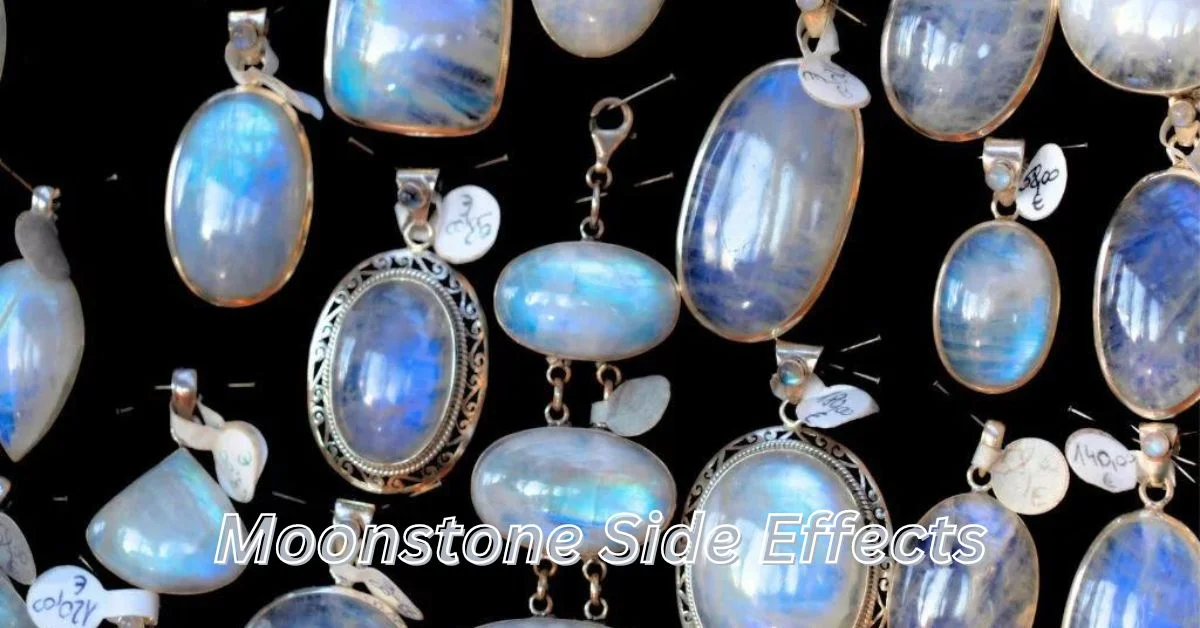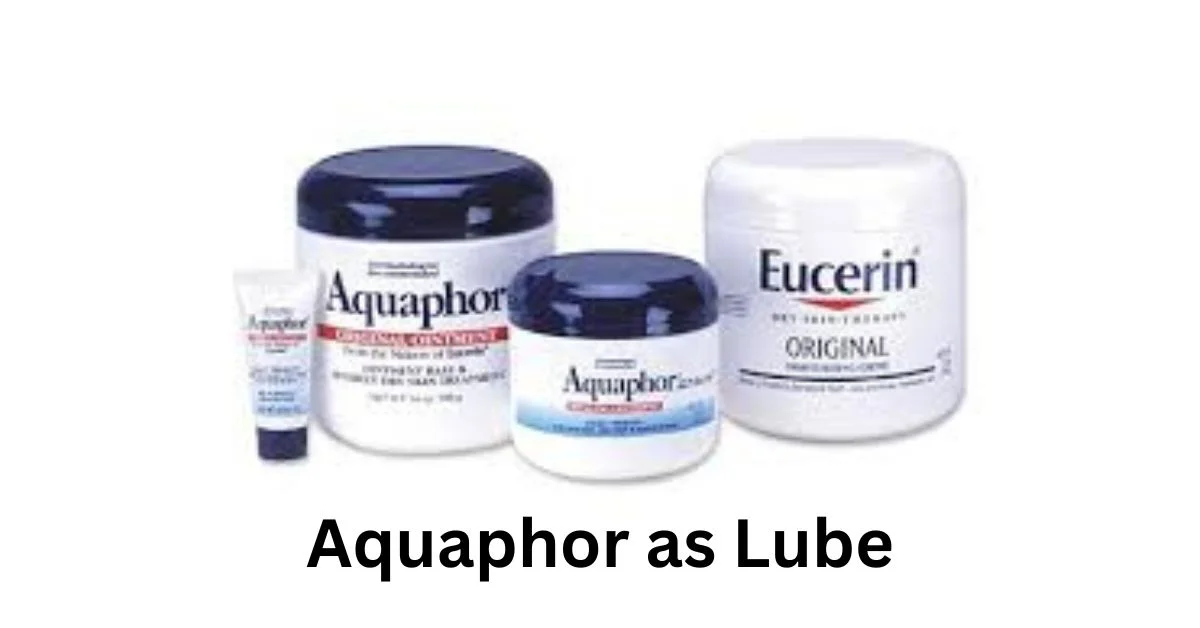Fashion
Dermal Piercing 101: What is it and How Does it Work?

Ready to take your body piercing game to the next level? Look no further than the world of dermal piercings! These unique and eye-catching accessories are a popular choice for those looking to make a bold statement with their body art. But what exactly is a dermal piercing, and how does it work? Whether you’re a seasoned piercing enthusiast or just curious about trying something new, this comprehensive guide will answer all your burning questions about dermal piercings. From the different types of anchors to aftercare tips and potential issues, we’ve got you covered. So buckle up and get ready to dive into the fascinating world of dermal piercings!
What is a Dermal Piercing?
A dermal piercing, also known as a microdermal or single-point piercing, is a unique form of body modification that involves inserting an anchor into the skin and attaching decorative jewelry to it. Unlike traditional piercings that go through both sides of a body part, such as ears or nose, dermal piercings are single-pointed and can be placed almost anywhere on the body.
The process starts with creating a small pocket in the skin using either a needle or punch tool. The anchor is then inserted into this pocket, securing it beneath the surface of the skin. The top part of the anchor protrudes slightly above the skin level, allowing for different types of jewelry to be screwed onto it. This creates an eye-catching effect where the jewelry appears to be floating on your skin!
How Does a Dermal Piercing Work?
Dermal piercings, also known as microdermal or surface piercings, are a unique form of body modification that involves inserting jewelry into the skin. But how exactly does it work?
The process begins with a trained professional using a dermal punch or needle to create a small pocket in the skin. Unlike traditional piercings that go through both sides of the flesh, dermal piercings only have one visible entry point on the surface. This pocket acts as an anchor for the jewelry, which is then inserted and secured into place.
Once inserted, the body’s natural healing process kicks in. Over time, new tissue grows around and within the anchor base of the piercing, further securing it in place. The result is a striking and eye-catching piece of jewelry seemingly floating on your skin!
With its innovative approach to piercing placement and healing process, dermal piercings offer individuals an opportunity for unique self-expression while adding some sparkle to their style!
Different Types of Dermal Piercing Anchors
When it comes to dermal piercings, the type of anchor used plays a crucial role in its success and longevity. There are several different types of anchors that can be used for dermal piercings, each with their own unique characteristics.
One common type is the flat disc anchor, which features a flat base that sits flush against the skin. This type of anchor provides stability and minimizes movement, making it ideal for areas prone to friction or irritation. Another popular option is the ball-and-socket anchor, which allows for more flexibility and movement compared to other types. This makes it suitable for areas where there may be more bending or stretching involved.
Choosing the right type of anchor depends on factors such as location, activity level, and personal preference. It’s important to consult with an experienced piercer who can guide you in selecting the most appropriate anchor for your specific needs and ensure a successful dermal piercing experience!
Duration of a Dermal Piercing
The duration of a dermal piercing can vary from person to person. Some factors that can affect how long a dermal piercing lasts include the individual’s body chemistry, the location of the piercing, and how well it is cared for. On average, a dermal piercing can last anywhere from several months to several years.
It’s important to note that while a dermal piercing may initially heal within a few weeks, it doesn’t mean it will be permanent. Over time, the skin around the anchor may start to weaken or migrate, leading to potential complications or even rejection of the jewelry. Regular check-ups with your piercer and proper aftercare are crucial in prolonging the lifespan of your dermal piercing. So if you’re considering getting one, make sure you’re prepared for ongoing maintenance and potential touch-ups down the line!
Dermal Piercing Removal Process
Removing a dermal piercing may seem daunting, but it is a straightforward process when done correctly. The first step is to ensure that the area around the piercing is clean and disinfected. This can be done by gently washing the area with saline solution or an antiseptic cleanser.
Next, using sterilized jewelry pliers, carefully grip the anchor of the dermal piercing and slowly twist it in a clockwise direction. It’s important to apply gentle pressure and avoid any sudden movements to minimize discomfort or damage to the surrounding skin.
Once the anchor has been loosened, continue twisting until it can be easily lifted out of the skin. If you encounter any resistance or difficulty during this process, it’s best to seek professional help from a trained piercer or dermatologist.
Remember, proper aftercare should follow removal to promote healing and prevent infection. Applying an antibiotic ointment and keeping the area clean with saline solution will aid in minimizing scarring and ensuring optimal recovery.
Removing a dermal piercing requires patience and precision. By following these steps carefully, you can safely take out your dermal piercing without causing unnecessary harm or complications!
Is a Dermal Piercing Considered Body Modification?
Dermal piercings have gained popularity in recent years as a form of body modification. But is getting a dermal piercing considered body modification? The answer is yes!
When you undergo a dermal piercing, it involves implanting jewelry beneath the surface of your skin. This can be done on various parts of the body, such as the face, chest, or even fingers. Unlike traditional piercings that go through one entry and exit point, dermal piercings create an anchor under the skin to hold the jewelry in place.
By definition, any intentional alteration made to your body for aesthetic purposes can be classified as body modification. Dermal piercings fall into this category because they involve permanently changing your appearance by adding new adornments to your skin.
While not everyone may view dermal piercings as traditional forms of body modification like tattoos or scarification, they are indeed a unique way to express yourself and enhance your personal style through deliberate alterations to your physical being. So if you’re considering getting a dermal piercing, know that you’ll be joining the ranks of those who appreciate and embrace body modifications!
Popular Body Parts for Dermal Piercing
When it comes to dermal piercings, there are several body parts that people love to adorn with these unique accessories. One popular choice is the navel area, where a dermal anchor can create an eye-catching design that adds a touch of flair to your midsection. Another trendy spot for dermal piercings is the collarbone area, providing a subtle yet stylish accent to your décolletage.
Additionally, many individuals opt for dermal piercings on their face, such as on the cheekbones or above the eyebrow. These placements allow for endless possibilities when it comes to jewelry choices and can enhance your facial features in a one-of-a-kind way. Whether you prefer a more discreet placement or want your dermal piercing to be front and center, there are plenty of popular body parts just waiting to be adorned with this fashionable accessory!
How Much Does a Dermal Piercing Cost?
Dermal piercings have become increasingly popular in recent years, with many people looking to add a unique and edgy touch to their body art. One common question that comes up when considering getting a dermal piercing is, “How much does it cost?” Well, the cost of a dermal piercing can vary depending on various factors.
The price may be influenced by the location where you choose to get your piercing done. Different studios or salons may have different pricing structures based on their expertise and reputation. The type of jewelry you choose for your dermal anchor can also affect the overall cost. There are various options available ranging from basic stainless steel to more intricate designs made of precious metals or adorned with gemstones.
It’s important to do your research beforehand and consult with professionals in order to get an accurate estimate of how much a dermal piercing will cost for you. Keep in mind that while price is certainly an important consideration, it should not be the sole deciding factor when it comes to choosing where and how to get your dermal piercing done.
Does a Dermal Piercing Hurt?
One of the most common questions people have about dermal piercings is whether or not they hurt. The answer, as with any piercing, can vary from person to person. Some individuals report feeling only a mild discomfort during the procedure, while others may experience more intense pain.
The level of pain experienced during a dermal piercing largely depends on factors such as individual pain tolerance, the location of the piercing, and the skill of the piercer. It’s important to remember that everyone’s pain threshold is different, so what might be painful for one person could be relatively bearable for another.
That being said, it’s worth noting that dermal piercings involve inserting jewelry under your skin, which can cause some discomfort. However, many individuals find that any initial pain subsides quickly and is well worth it for the unique and stylish look a dermal piercing provides.
Dermal Piercing Aftercare and Cleaning Tips
Taking care of your dermal piercing is crucial to ensure proper healing and prevent any complications. After getting a dermal piercing, it’s important to clean the area regularly to keep it free from bacteria and infection. To do this, start by washing your hands thoroughly with antibacterial soap before touching or cleaning your piercing.
For daily cleaning, you can use a saline solution or sea salt soak. Mix 1/4 teaspoon of non-iodized sea salt with one cup of warm distilled water and soak a sterile cotton ball in the solution. Gently clean around the jewelry and rinse off any residue afterwards. Avoid using harsh products like alcohol or hydrogen peroxide as they can irritate the skin.
Remember not to twist or rotate the jewelry as it may cause damage or delay healing. Be cautious when drying the area after cleaning by using disposable paper towels instead of regular towels that could harbor bacteria. It’s also recommended to avoid swimming pools, hot tubs, and saunas during the initial healing period as these environments are breeding grounds for bacteria.
By following these aftercare tips diligently, you can promote proper healing and enjoy your dermal piercing for years to come!
Dermal Piercing Healing Time
One of the most important aspects to consider when getting a dermal piercing is the healing time. Healing time can vary depending on several factors, such as your body’s natural healing ability and how well you take care of your piercing.
Typically, it takes about 6 to 12 weeks for a dermal piercing to fully heal. During this time, it is crucial to follow proper aftercare instructions given by your piercer. This may include cleaning the piercing with saline solution or a gentle cleanser and avoiding activities that could irritate or disrupt the healing process. It’s important to be patient during this period and not rush the healing process as doing so could lead to complications or prolong the recovery time.
Remember that everyone’s body heals at its own pace, so don’t compare your healing progress with others’. Just listen to your body and give it the time it needs to heal properly.
Common Issues with Dermal Piercings
Dermal piercings may look cool, but they come with their fair share of challenges. One common issue is the risk of rejection or migration. Since dermal anchors are placed beneath the skin, there’s a chance that your body might see them as foreign objects and try to push them out. This can lead to discomfort and even complete loss of the piercing if not addressed promptly.
Another issue is infection. Any open wound carries a risk of infection, and dermal piercings are no exception. If proper aftercare isn’t followed or if unclean tools are used during the procedure, bacteria can enter the pierced area and cause an infection. It’s crucial to keep an eye out for signs like redness, swelling, pain, discharge, or fever and seek medical attention if you suspect an infection.
Proper care and vigilance can help prevent these issues from escalating into major problems. Stay tuned for our next blog section where we’ll discuss how to change dermal piercing jewelry!
How to Change Dermal Piercing Jewelry
Changing dermal piercing jewelry can be a fun way to switch up your look or express your personal style. While it may seem intimidating at first, with the right tools and technique, you can easily swap out your dermal anchor for a new piece of jewelry.
Before attempting to change your dermal piercing jewelry, make sure that the area is clean and free from any infections or irritations. Use a saline solution to gently cleanse the area and remove any debris. It’s important to handle the jewelry with clean hands or use sterile gloves to prevent introducing bacteria into the piercing site.
Once you’re ready, carefully unscrew one end of the anchor using either tweezers or specialized dermal pliers. Take care not to apply too much pressure or force as this can cause discomfort or damage to the skin. Once removed, simply replace it with your desired piece of jewelry by screwing it back into place on the anchor. Remember to always listen to your body and if you experience any pain or resistance during the process. Consult with a professional piercer for assistance.
How to Deal with an Infected Dermal Piercing
Dealing with an infected dermal piercing can be a frustrating experience. But it’s important to address the issue promptly to avoid further complications. The first step in handling an infection is to assess the severity of the situation. If you notice any signs such as redness, swelling, pus discharge, or severe pain around the piercing site. It’s crucial not to ignore these symptoms.
Once you’ve identified that your dermal piercing is indeed infected, there are several steps you can take to promote healing. First and foremost. Do not remove the jewelry yourself as this may trap bacteria within the wound. Instead, seek professional help from a piercer or dermatologist who can properly clean and treat the infection. They may recommend using saline solution or antimicrobial cleansers for regular cleaning and provide appropriate antibiotics if necessary. Remember to avoid touching or playing with your piercing as well – keeping it clean and letting it heal undisturbed is key!
Scarring from Dermal Piercings
While dermal piercings can be a unique and stylish form of body modification, it’s important to remember that they do come with potential risks. One such risk is scarring. Like any piercing, there is a chance that you may experience scarring after removing your dermal piercing.
Scarring occurs when the body forms excess scar tissue around the site of the piercing as part of the healing process. The severity of scarring can vary depending on several factors, including individual skin type. And how well you care for your piercing during the healing process.
To minimize the risk of scarring, it is crucial to follow proper aftercare guidelines. And keep your dermal piercing clean at all times. Avoid touching or twisting the jewelry unnecessarily and refrain from changing it until it has fully healed.
If you do notice excessive scarring or other complications with your dermal piercing. Seek advice from a professional piercer or healthcare provider who can provide guidance on further treatment options.
Remember, everyone’s experience with dermal piercings will differ. While some individuals may have minimal scarring or none at all, others may experience more noticeable scars. If you decide to get a dermal piercing. Consider these risks in order to make an informed decision about whether this type of body modification is right for you.
Fashion
Moonstone Side Effects: What You Should Be Aware Of

Introduction
Moonstone, with its ethereal glow and shimmering beauty, has enchanted people for centuries. Often associated with mystical properties and emotional healing, this gem is a favorite among crystal enthusiasts and jewelry lovers alike. But as with all things, it’s essential to be aware of both the benefits and potential side effects of moonstone.
What is Moonstone?
Historical and Cultural Significance
Historically, moonstone has been revered in various cultures. Ancient Romans believed it was formed from moonlight, while in Hinduism, it is associated with the moon god, Chandra. Its use in ancient jewelry and its symbolic significance make moonstone a gem steeped in rich cultural heritage.
Moonstone in Modern Times
Potential Side Effects of Moonstone
Understanding the Physical Side Effects
- Skin Reactions: Some individuals may experience skin irritations or allergic reactions when coming into contact with moonstone, particularly if it’s set in jewelry. Symptoms might include redness or itching.
- Allergic Reactions: Although rare, moonstone can cause allergic reactions in sensitive individuals. If you notice any unusual symptoms, it’s best to discontinue use and consult a healthcare professional.
- Sensitivity to Light: Moonstone’s adularescence can sometimes cause visual discomfort, especially in bright light. This effect is usually mild but can be bothersome for some.
Emotional and Psychological Side Effects
- Mood Swings: Some users report experiencing mood swings or emotional instability when wearing moonstone. This is believed to be due to the stone’s purported influence on emotional energy.
- Sleep Disturbances: The energizing properties of moonstone might lead to sleep disturbances or restless nights for certain individuals, particularly if worn close to bedtime.
- Anxiety and Stress: For some, the metaphysical properties of moonstone might amplify feelings of anxiety or stress rather than alleviating them.
Who Should Avoid Moonstone?
- People with Certain Health Conditions: If you have specific health issues, especially those related to skin sensitivities or mental health, it might be wise to avoid moonstone or consult a doctor before use.
- Pregnant Women: Pregnant women should exercise caution with any gemstone or crystal, including moonstone, due to the potential for unexpected effects.
- Children: Given their sensitivity to external stimuli, children may react differently to moonstone. It’s advisable to monitor their reactions carefully.
Precautions and Safety Tips
- Proper Usage: To minimize any adverse effects, use moonstone in moderation and be mindful of how it affects you personally.
- Care and Maintenance: Proper care of moonstone jewelry can prevent physical reactions. Clean the stone gently and avoid exposing it to harsh chemicals.
- Consulting Professionals: If you’re unsure about how moonstone might affect you, consider seeking advice from a gemologist or a healthcare provider.
How to Choose the Right Moonstone
- Quality and Authenticity: Ensure you purchase moonstone from reputable sources to avoid counterfeit stones that might have added materials or coatings causing adverse effects.
- Purchasing Tips: Look for clear, unblemished moonstones with a strong adularescence for the best experience and minimal side effects.
- Avoiding Counterfeits: Be cautious of overly cheap moonstones or those with unusual characteristics, as these might be synthetic or altered.
Alternative Crystals to Consider
Moonstone Myths and Misconceptions
- Common Misunderstandings: Some myths suggest that moonstone can bring bad luck or cause illness. In reality, these are unsubstantiated and likely stem from misunderstandings about the stone’s properties.
- Debunking myths: Scientific and anecdotal evidence shows that while moonstone may have effects, these are usually not harmful and should be assessed individually.
Expert Opinions on Moonstone Side Effects
- Insights from Gemologists: Gemologists generally view moonstone as a safe and beneficial gem, though individual reactions can vary.
- Feedback from Users: Many users report positive experiences with moonstone, though a small percentage may experience side effects.
Conclusion
Moonstone is a captivating gemstone with a range of benefits and potential side effects. Understanding these effects helps you make informed decisions about incorporating moonstone into your life. Always listen to your body and consult professionals if you’re unsure about its impact on you.
FAQs
What are the most common side effects of moonstone?
The most common side effects include skin irritations, mood swings, and sleep disturbances.
Can moonstone cause allergic reactions?
Yes, although rare, moonstone can cause allergic reactions in sensitive individuals.
How can I ensure my moonstone is authentic?
Purchase from reputable sellers and check for quality certifications to ensure authenticity.
What should I do if I experience negative effects from moonstone?
Discontinue use and consult a healthcare professional for advice.
Fashion
Aquaphor as Lube: What You Need to Know Before Trying It

Introduction
Aquaphor has long been a staple in many households, known for its ability to soothe and protect dry, irritated skin. But a new curiosity has emerged: can this versatile ointment double as an intimate lubricant? This question has sparked interest among those looking for multipurpose products and alternatives to specialized lubricants. In this article, we will explore the feasibility of using Aquaphor as lube, its safety implications, and what you should consider before making this decision.
Understanding Aquaphor
What is Aquaphor?
Aquaphor is an ointment produced by Eucerin, primarily designed to relieve and protect dry, chapped skin. Its formulation includes a blend of petrolatum, mineral oil, and other emollients that create a barrier on the skin, which helps retain moisture and promote healing.
Key Ingredients and Their Functions
- Petrolatum: Acts as an occlusive agent to lock in moisture.
- Mineral Oil: Helps to soften and smooth the skin.
- Glycerin: A humectant that draws moisture from the environment into the skin.
Intended Uses and Benefits
Aquaphor is commonly used to treat conditions such as eczema, psoriasis, and minor burns. Its gentle formulation makes it a popular choice for sensitive skin areas, but it was never intended for use as a lubricant.
The Question: Can Aquaphor Be Used as Lube?
Common Misconceptions
Many people assume that if a product is good for skin, it must be good for all skin-related uses, including lubrication. However, just because Aquaphor is beneficial for skin care doesn’t mean it’s suitable for intimate areas.
Why People Consider Using Aquaphor as Lube
The idea of using Aquaphor as a lubricant likely stems from its smooth texture and moisturizing properties. People looking for alternatives to commercial lubricants might see Aquaphor as a readily available option.
Overview of Popularity and Curiosity
Curiosity about using Aquaphor as lube reflects a broader trend of seeking multipurpose products and exploring non-traditional uses for everyday items.
Safety Considerations
Ingredient Safety for Intimate Areas
Aquaphor’s ingredients are designed for external skin use and might not be suitable for intimate areas. Petrolatum and mineral oil, while safe for skin, may cause irritation or disrupt the natural balance of sensitive areas.
Potential Risks and Reactions
Using Aquaphor as a lubricant may lead to allergic reactions or infections. The product is not formulated to be used internally and might not provide the same safety and comfort as specialized lubricants.
Hygiene and Sterility Concerns
Aquaphor is not a sterile product, and using it in intimate areas could introduce bacteria or pathogens, increasing the risk of infections. Specialized lubricants are designed with sterility and safety in mind.
Comparing Aquaphor with Specialized Lubricants
Water-Based Lubricants
Water-based lubricants are a popular choice due to their compatibility with condoms and sex toys. They are easy to clean up and generally safe for sensitive skin. Look for products without parabens or glycerin for a more natural option.
Silicone-Based Lubricants
Silicone-based lubricants provide long-lasting lubrication and are water-resistant, making them suitable for various activities. However, they may degrade silicone toys and require careful cleaning.
Oil-Based Lubricants
Natural oils like coconut oil can be used for external lubrication but should not be used with latex condoms, as they can weaken the latex. Oil-based lubes are not recommended for internal use.
Pros and Cons of Using Aquaphor as Lube
Benefits
- Moisturizing Properties: Aquaphor’s ability to hydrate the skin might offer some level of lubrication.
- Availability: Easily accessible in many households.
Drawbacks and Limitations
- Potential Irritation: Not designed for intimate areas, may cause irritation.
- Lack of Sterility: Increases risk of infections.
- Texture Issues: May not provide adequate or lasting lubrication.
Alternatives to Aquaphor for Intimate Lubrication
Best Water-Based Lubricants
- K-Y Jelly: A well-known brand for its gentle formulation.
- Sliquid H2O: Offers a natural, glycerin-free option.
Top Silicone-Based Lubricants
- Pjur Original: Long-lasting and suitable for various activities.
- Astroglide X: Provides a smooth, extended glide.
Safe Natural Oils for Lubrication
- Coconut Oil: Hydrating and naturally antimicrobial but not compatible with latex condoms.
- Almond Oil: A mild, moisturizing option but should be used cautiously.
How to Choose the Right Lubricant
Factors to Consider
- Compatibility: Ensure the lubricant works with condoms and sex toys.
- Personal Sensitivities: Choose a product that suits your skin type and preferences.
Matching Lubricants to Needs and Preferences
Consider what type of activities you’ll be engaging in and choose a lubricant that offers the appropriate level of comfort and effectiveness.
Conclusion
While the idea of using Aquaphor as lube may be intriguing, it’s essential to prioritize safety and effectiveness. Aquaphor is not designed for intimate lubrication and may pose risks such as irritation or infection. Opting for specialized lubricants, whether water-based, silicone-based, or natural oils, ensures a safer and more comfortable experience. Always consider your health and well-being when choosing products for intimate use.
FAQs
What are the risks of using Aquaphor as lube?
Using Aquaphor as a lubricant can lead to irritation, allergic reactions, or infections due to its ingredients and lack of sterility.
Can Aquaphor cause infections or irritation?
Yes, Aquaphor may disrupt the natural balance of intimate areas and increase the risk of infections or irritation.
What are the best alternatives to Aquaphor for lubrication?
Water-based, silicone-based, and safe natural oil lubricants are better alternatives, each offering specific benefits and suitability for different needs.
How do water-based lubes compare to silicone-based lubes?
Water-based lubes are easier to clean and safe for most activities, while silicone-based lubes offer longer-lasting lubrication and are water-resistant.
Are natural oils a safe option for lubrication?
Natural oils like coconut oil can be used for external lubrication but should not be used with latex condoms, as they can weaken the latex.
Fashion
Top 10 Donkey Kong Costumes for 2024: Perfect for Any Occasion

Introduction
Choosing the right costume can set the tone for your entire event, and if you’re a fan of classic arcade games, a Donkey Kong costume is a fantastic choice. This article delves into the top 10 Donkey Kong costumes for 2024, offering something for everyone, whether you’re attending a Halloween party, a gaming convention, or a fun themed event.
Why Choose a Donkey Kong Costume?
Popularity and Iconic Status
Donkey Kong is not just a character; he’s a piece of video game history. With his robust physique, signature red tie, and larger-than-life personality, Donkey Kong has become a beloved figure across generations. Choosing a Donkey Kong costume taps into that nostalgia and ensures you’ll stand out in a crowd.
Versatility for Different Occasions
From Halloween to cosplay events, Donkey Kong’s appeal transcends various themes. His distinctive look allows for creative interpretations, making him a versatile choice for any event.
Top 10 Donkey Kong Costumes for 2024
1. Classic Donkey Kong Costume
Description: This costume captures the essence of Donkey Kong with its recognizable brown fur, red tie, and signature “DK” logo. It’s a classic choice that never goes out of style.
Why it’s a great choice: The classic Donkey Kong costume is perfect for those who want to stay true to the original look of the character. It’s ideal for Halloween and general cosplay events, offering a timeless appeal.
2. Donkey Kong and Diddy Kong Duo Costume
Description: Perfect for pairs, this costume set includes both Donkey Kong and his trusty sidekick, Diddy Kong. It’s a great way to coordinate with a friend or significant other.
Ideal for pairs: This duo costume adds a fun element to any event, making it a hit at themed parties and conventions. It’s also a great conversation starter!
3. Donkey Kong Inflatable Costume
Description: The inflatable Donkey Kong costume offers a playful twist on the classic design. It features a large, balloon-like structure that makes you look like you’re right out of the game.
Advantages of inflatable costumes: These costumes are not only eye-catching but also comfortable, allowing for easy movement and ventilation. They’re perfect for those who want to make a bold statement without sacrificing comfort.
4. Donkey Kong Super Mario Kart Costume
Description: Inspired by Donkey Kong’s appearance in the Super Mario Kart games, this costume features racing gear and a helmet, giving you a dynamic, action-ready look.
Perfect for gaming events: If you’re heading to a gaming convention or a Mario Kart-themed party, this costume is a perfect choice. It combines Donkey Kong’s iconic look with a sporty twist.
5. Donkey Kong with Accessories
Description: Enhance your Donkey Kong costume with additional accessories like a faux banana, a barrel prop, or even a custom red tie with the DK logo.
Adding extra flair: Accessories can elevate your costume, making it stand out even more. They also offer opportunities for interactive fun during your event.
6. DIY Donkey Kong Costume
Description: For those who enjoy crafting, a DIY Donkey Kong costume is a great project. You can customize the look to your liking and ensure it’s a unique representation of the character.
How to create your own: Gather materials such as brown fabric, a red tie, and face paint. There are plenty of tutorials online to guide you through the process, making it a fun and rewarding project.
7. Retro Arcade Donkey Kong Costume
Description: This costume pays homage to the classic arcade game with pixelated designs and retro details, perfect for fans of the original game.
Nostalgic appeal: If you’re a fan of the vintage gaming era, this costume offers a nostalgic trip back to the golden days of arcade games.
8. Donkey Kong Mask with Casual Outfit
Description: For a more relaxed approach, pair a Donkey Kong mask with a casual outfit. It’s a simple yet effective way to show off your fandom.
Comfort and ease: This option is ideal for those who want a low-maintenance costume that’s still instantly recognizable. It’s also great for last-minute events.
9. High-Quality Donkey Kong Suit
Description: For those who want to invest in a premium costume, a high-quality Donkey Kong suit offers an authentic look with attention to detail and superior materials.
Premium options: These suits often feature high-quality fabric and construction, ensuring durability and a great fit. They’re perfect for serious cosplayers and collectors.
10. Donkey Kong Baby Costume
Description: Adorable and fun, the Donkey Kong baby costume is perfect for the little ones. It features a soft, comfortable design that’s easy to put on and take off.
Adorable for little ones: If you have a baby or toddler, this costume is a charming way to include them in the fun. It’s designed for comfort and ease, making it ideal for young children.
How to Choose the Perfect Donkey Kong Costume
Considerations for Fit and Size
Choosing the right size ensures comfort and a good fit. Be sure to check the sizing charts and consider whether you want a loose or fitted costume.
Material and Comfort
Opt for materials that are breathable and comfortable, especially if you’ll be wearing the costume for extended periods. Look for options with good ventilation and easy-to-wear features.
Budget and Quality
Balance your budget with quality. Higher-end costumes may offer better materials and details, but there are also affordable options that look great. Decide what fits best within your budget while still meeting your expectations for quality.
Where to Buy Donkey Kong Costumes
Online Retailers
Websites like Amazon, eBay, and specialty costume shops offer a wide range of Donkey Kong costumes. You can compare prices and read reviews to find the best option.
Specialty Stores
Visit stores that specialize in costumes and cosplay gear. They often have a selection of high-quality options and can provide expert advice.
Custom Options
For a truly unique costume, consider custom-made options. Many online retailers and local costume shops offer customization services to create a one-of-a-kind Donkey Kong look.
Tips for Wearing and Maintaining Your Costume
Comfort Tips
Wear comfortable underlayers and ensure your costume fits well. Practice wearing it before your event to adjust any fittings and make sure you’re comfortable moving around.
How to Care for Your Costume
Follow the care instructions provided with your costume. Regularly clean and store it properly to maintain its condition for future use.
Conclusion
Donkey Kong costumes offer a fantastic way to celebrate this iconic character, whether you’re attending a Halloween party, a cosplay event, or a themed gathering. From classic looks to innovative designs, there’s a Donkey Kong costume for every fan. Consider your preferences, budget, and the occasion to choose the perfect outfit that will make you the center of attention.
FAQs
Where can I find the best Donkey Kong costumes?
You can find Donkey Kong costumes at online retailers like Amazon and specialty costume shops. For custom options, check local costume stores or custom costume websites.
How can I make a DIY Donkey Kong costume?
Create a DIY Donkey Kong costume using brown fabric, a red tie with the DK logo, and face paint. There are many online tutorials to guide you through the process.
What is the best material for a Donkey Kong costume?
Opt for breathable and comfortable materials like cotton or polyester blends. Ensure the fabric is durable and easy to move in for extended wear.
Are there Donkey Kong costumes for kids?
Yes, there are many adorable Donkey Kong costumes designed for children, including baby and toddler sizes. These are typically made from soft, comfortable materials.
How do I maintain and store my Donkey Kong costume?
Follow the care instructions provided with your costume. Store it in a cool, dry place and clean it according to the manufacturer’s guidelines to keep it in good condition.
-

 Fashion2 years ago
Fashion2 years agoExploring Purenudism: Embracing Body Positivity and Freedom
-

 Shops1 year ago
Shops1 year agoStaples Store Hours: What Time Does Staples Open And Close?
-

 Shops2 years ago
Shops2 years agoWalmart Vision Center Hours
-

 Shops1 year ago
Shops1 year agoWalgreen Pharmacy Hours: What Time Does It Open & Close?
-

 Shops1 year ago
Shops1 year agoPublix Pharmacy Hours and Locations
-

 Entertainment2 years ago
Entertainment2 years agoThothub.lol: The Digital Realm of Entertainment
-

 Business2 years ago
Business2 years agoDesigner Clothing: Making a Statement
-

 Shops1 year ago
Shops1 year agoWalmart Deli Open & Close Hours
